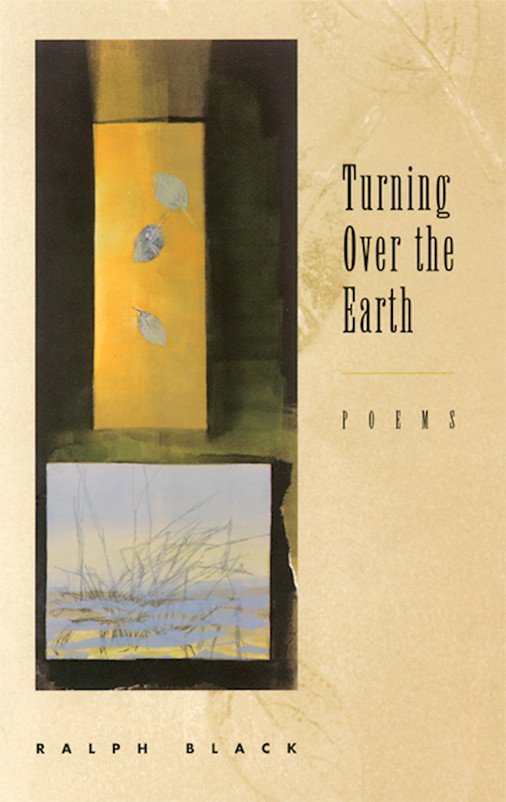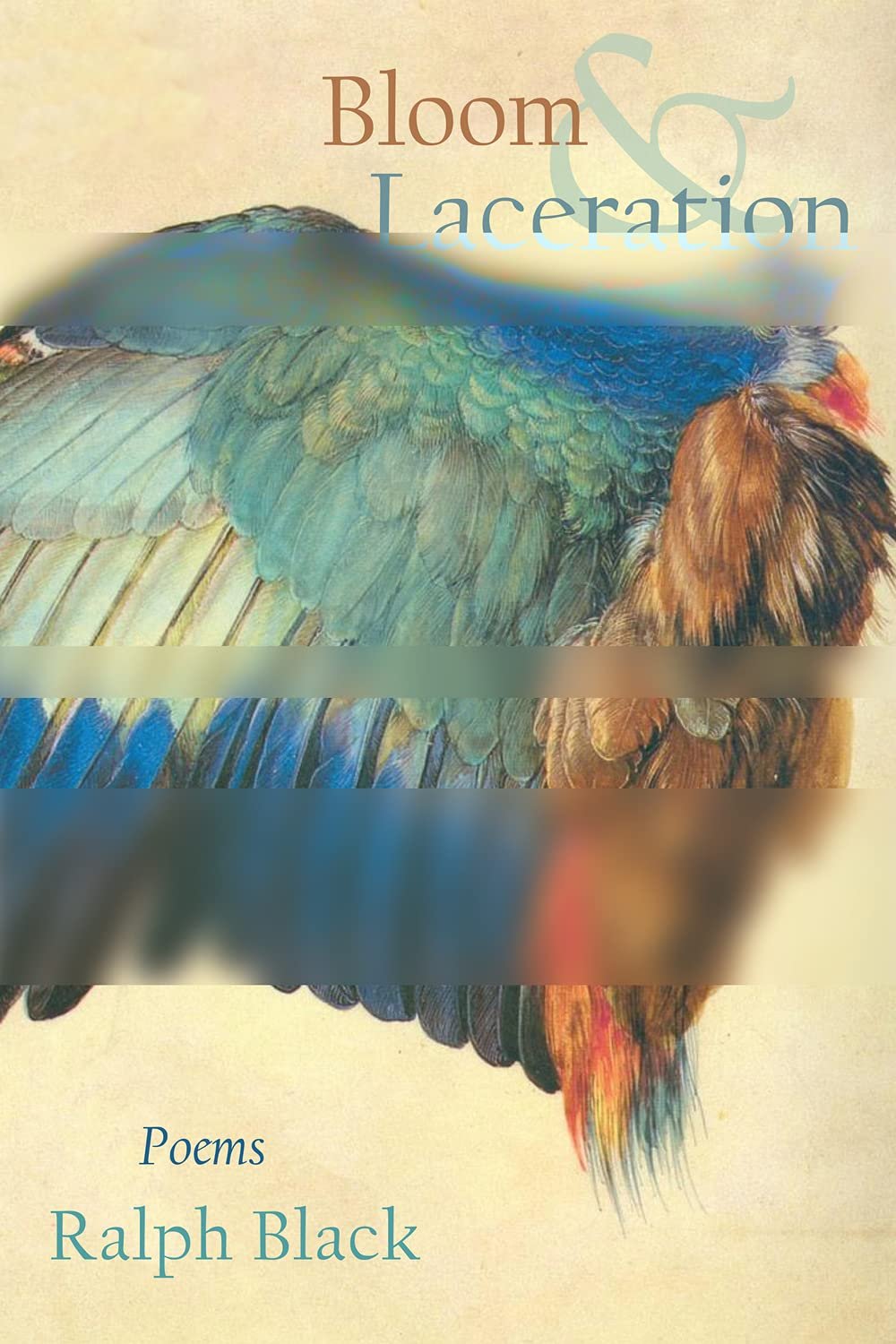Ralph Black: Twenty Years of Attention
What makes a poem ecopoetic? What is an ecopoet? Who are your favorite ecopoets? are questions I see asked regularly on social media. Part of me wants to respond: all poets are ecopoets, and part of me wants to look deeper into this question, into older books, where answers to our present questions often lie.
Turning Over the Earth by Ralph Black. Milkweed Books, 2000. 79 pages. $13.95.
And part of me is wary of poets using the (now very visible) term “Anthropocene” in their poems and collection titles. Who are the poets who have been doing this work—often quietly—for many years? Poets whose attention has consistently been turned to the environment, to the other, non-human lives of our planet? Names come to mind: Arthur Sze, Jennifer Atkinson, Camille Dungy, Jorie Graham.
I was intrigued when the poet Ralph Black reached out to me regarding a review of two of his books, published nearly twenty years apart—Turning Over the Earth (Milkweed Books, 2000) and Bloom & Laceration (Green Writer’s Press, 2018). Being asked to review a twenty-year old title is not a request you receive every day. But when I learned that Black’s poetry has an ecopoetics focus, I wanted to know more about how this focus has changed, clarified, and persisted for Black across the years. I wanted to know more about Black’s attention across two decades of time.
Bloom & Laceration by Ralph Black. Green Writers Press, 2018. 87 pages. $14.95.
Turning over the Earth takes its epigraph from Zbigniew Herbert: “Don’t be surprised if we don’t know how to describe the world / and only speak of things affectionately by their first names.” Already the reader knows the following poems will likely not be in the tradition of ecopoetics concerned with the impersonal nature and reality of nature (for example, Robinson Jeffers). The Herbert epigraph suggests that intimacy and relationship are central to description and—perhaps—even empiricism.
The collection’s opening poem, “The Muses of Farewell,” does not take place in realism, and begins with the hypothetical situation: “Suppose when you least expect it / it begins to snow.” The poem fills with snow until the narrator suggests:
Suppose when you panic and reach
for the fireplace poker and take a swing
at the white beveled glass in the study
snow rolls into the room and fills it,
then fills another, backing you back
toward the back end of the house.
As the imagined “you” in the story begins to freeze to death, they imagine “Kafka walking the streets of Prague / in the middle of some dismal February night.” But Kafka, the reader is told, cannot help, either despite, or because,
he knows the terror
of the terror of belief, the sorrow
of metaphor, the impossibility of parable
to make the world into anything else.
The idea that the metaphor is not a way of changing the world, but a way of changing the way a person views or attends to the world, seems an absolutely vital concept for poets—metaphor makers—to bring to their environmental writing. There is sorrow and impossibility buried in the heart of our work, our writing. “And yet, and yet--” to quote Issa.
The last five lines of Black’s poem leaves the “you” of the poem at a specific place, one we all will recognize some part of:
So you are left at the end to the
muses of snow, who are the muses of
seduction, who are the muses of farewell
and this roomful of weather you have
nuanced, like all of us, out of your life.
There are many ways to open a book of poems—I would call this way uncompromising but also playful, deathly earnest, yet with a smile, the way the Green Knight laughs at Sir Gawain, who is stricken in his heart with remorse at his own failure. To rely on parable and nuance, this poem suggests, is a form of distance from the world and others that can chill one to the bones. Yet “Love Calls Us to the Things of This World,” wrote Richard Wilbur, citing Augustine’s Confessions. And time and again, Black lets love call his poems to the groundedness of the world: his daughter, apples on a tree, slicing ginger, his father’s carpentry. And at the same time, there is a dreaminess to this collection, and many of the poems exist in an autumnal, meditative mode. For example, the titular poem “Turning Over the Earth” begins,
Like Botticellian angels.
Like the huge blue angels of Chagall—
the way a raven looks up from the trace
of some creature into the middle of a
hot gravelly road, ruffles his iridescence
and makes for the one still branch of a pine.
There is always the sense that the earth is active, but also that the writer activates themselves by paying attention. That nothing on earth is simply a given. That the quality of engagement matters. That you must look—and know that looking is what you are doing—in order to attend and know.
Ralph Black’s collection, Bloom & Laceration, published 18 years after Turning Over the Earth, contains a noticeable tonal shift. There is a new urgency to the attention—what seemed laconic, philosophical in the first collection (“listening to Brahms and scratching / the hair on yours arm in a kind of / deliberate, Brahmsian way”) has transformed into a present language of confession, reproach, acknowledgment:
You know the word starving,
you know the meaning of CO2, you know
how apple seeds and smart bombs bloom,
how simple it is to flay a range of hills,
eviscerate a mountain with a spark.
You know how the stones can keep you warm.
You’re not an idiot. You’re not a fool.
You won’t let your heart, that tiny,
glacial island, fracture and calve.
The speaker’s failure is up close, personal—their knowledge of the world implicates them directly, yet they strive to “hold it together,” to do what their hand finds to do: “your mouth makes the shape of a call, a cry, / an uneven song. You reach for a pen, / tired as you are.” The idea of vocation—of being called to your work, of answering a call with your labor’s response—is here. The muses of farewell are not sufficient, and there is no nuancing away the world and environment’s problems.
This predominant speaker of the poems in Bloom & Laceration is someone who knows themselves and their proclivities that much the better—the stakes are raised, they have lived in time. The poet’s attention turns outward with precision—because they must. “My daughter can’t sleep / for the vanishing bees,” opens “Apiarial.” “She slumps // down the stairs dazed / as a sleepwalker, a stargazer // trailing a swarm of bad dreams.” The suffering of the earth arrives in layers—it laps over and across our children, neighbors, towns. Sewage and toxic waste are drained into river basins, industrial hog farms pollute the rural counties we imagine to be somehow preserved, undeveloped. Entanglement and dirty hands are the actual song, when poets pause and attend.
But Black has playful poems, too—“Games That Crows Play,” a brightly-verbed, Hopkinesque account of crow actions with lines like “Surf the spring-melt. / Hop the leaf-loam.” Or the sequence “Garland of Bears,” with the epigraph from Hayden Carruth: “Wouldn’t it be great to write nothing at all except poems about bears?” And in which the speaker notes, with happiness, “In every poem of Whitman’s / a bear: summer bears / drunk on the berries / of Central Park” and “In every poem of Dickinson’s / the passage of bears: / the passing through, / the just disappearing of bear / through the hedgerow.” It is a serious, crisis-filled time for the world, for animals, for the environment, but if we forget a love of play, it seems to me that we have forgotten something about the value of life, a childlikeness we should be striving to recover in our relationship to our planet.
It is out of this sense of play and love that poems like “Prayer for My Daughters in the Anthropocene” arise in Bloom & Laceration—a prayer for a return to the truth of trees: “I wish my daughters back up into the branches // of linden and maple, poplar and spruce, the high trees / they inhabited when they…were younger.” The speaker anticipates the reader’s possible skepticism, noting: “Despite appearance, this father’s wish is anti-nostalgic, pinioned as it is / to chaos and entropy.” “Prayer for My Daughters in the Anthropocene” is a poem about knowledgeable, truthful hope—not looking away-from, but looking towards.
For more than twenty years, Ralph Black’s poetry has been about attention to the real, a prayer worth teaching our children—a hope, but also a practical work. I want to close on Black’s wish for his daughters, because it offers readers a template for orienting ourselves towards relationship—with our children, our neighbors, our environment, our work colleagues—which is at the core of change for our communities and climate:
Why I wish them plugged into that vast array, wired
to the real, and thereby unplugged from the hundred gadgets,
the shiny blinders, the vortexing algorithms of modern life, wish them
high enough up the arboreal fretwork for view to become vision, teetering
above the grass like drunken parrots, bright-eyed mystics of leaf
and bud and floating seed, clinging and clung to, and all of a piece.
May our view, as Black writes, become vision.



